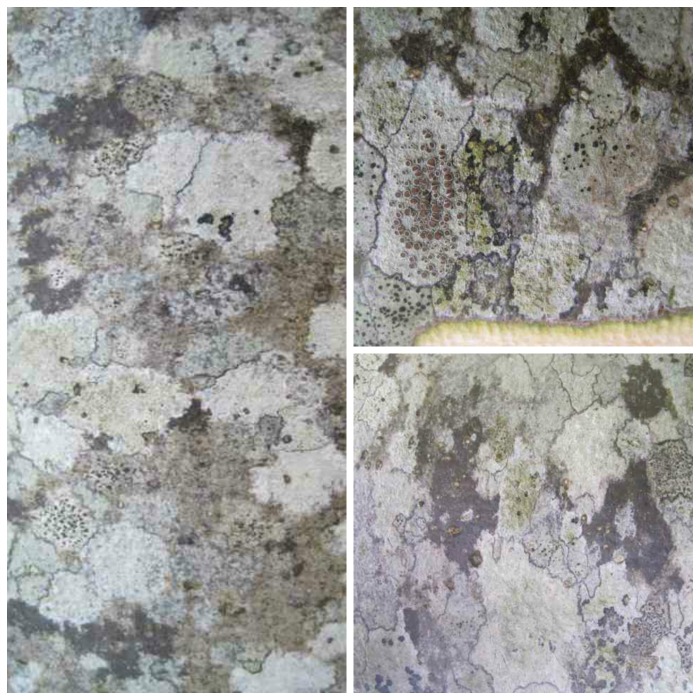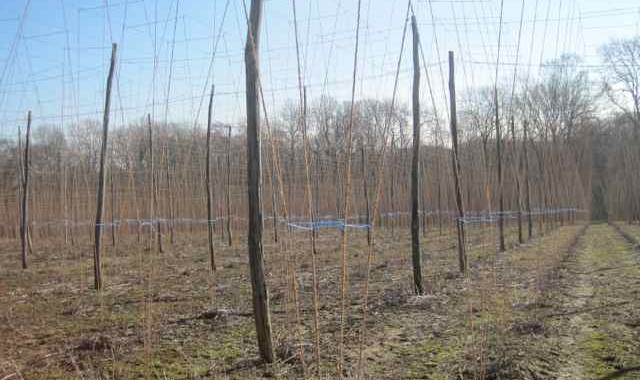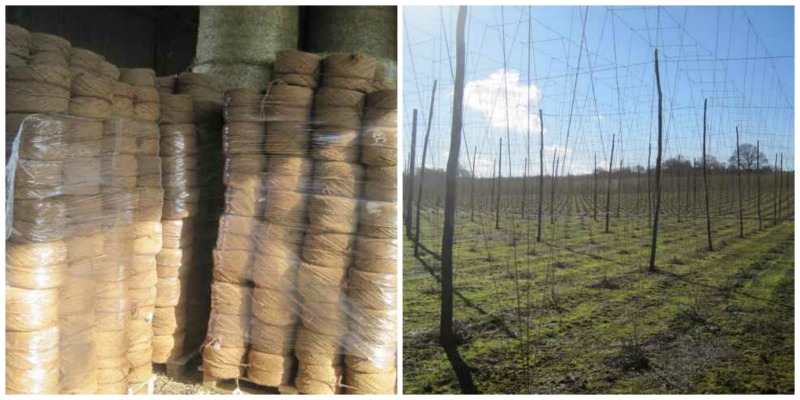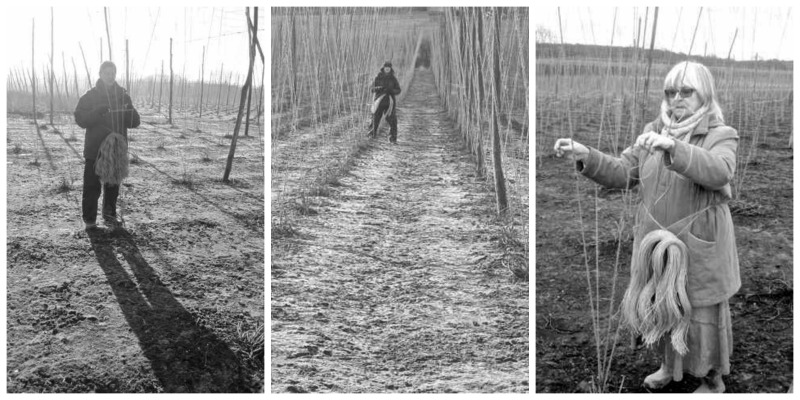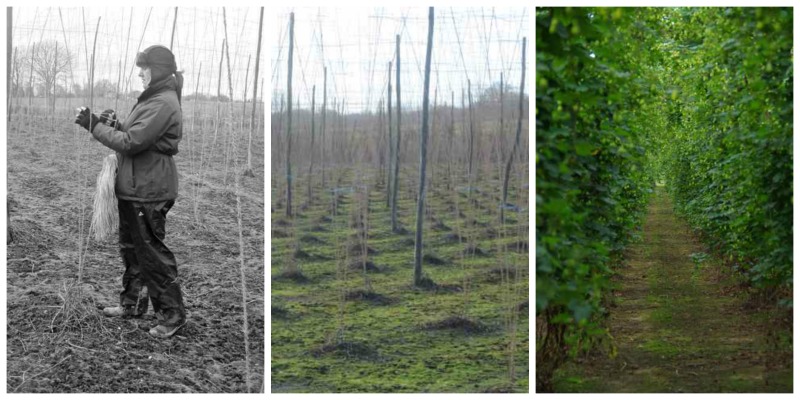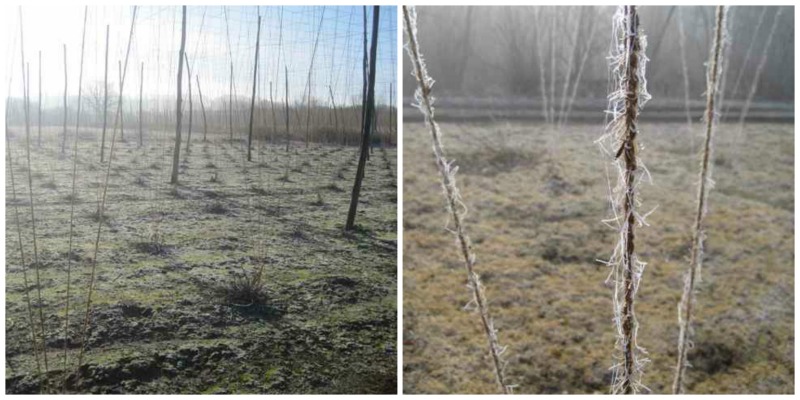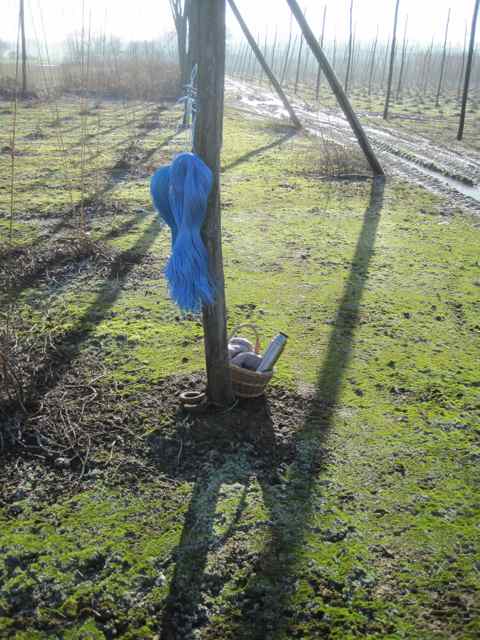It is hop twiddling time once again in the hop gardens of England and as always a lovely time of year as the countryside greens up and pings back into life. The cooler weather has slowed down this growth, hence we are well on top of the hop twiddling (or hop training as it is also known). This can change rapidly when the temperature rises, then the bines will shoot up the strings like long dogs; they can grow 6 inches in length on a warm night.
Each hop is trained a minimum of 3 times through the growing season. Twiddling hops is not difficult, it just takes time to do each one and as with all ‘hop’ work it needs a few people to make the day swing along more companionably and to see your progress at the end of each day. Working alone in a hop garden makes any progress seem infinitesimally minute.
With the typical Admiral hop shown here, you first need to know how many bines you will need to put up, the number required depends on the variety being grown. A quick cursory glance will then show if you have plenty to choose from, it is usually 6 or 8 to go up four strings. The temptation is always to put too many up rather than too few, one for luck is not to be recommended!
This is how I like to twiddle, but other people will have their own way and the end result should be the same. First of all I pull out the very long coarse first bines, they aren’t wanted so best get them out of the way before you start. It is thought that the first growth probably contains mildews which overwinter in these first buds, therefore it’s another reason not to use them. I then select finer bines of the right length, preferably of a fairly uniform length, approx 14 – 18 inches long which is enough for two or three good turns up the string. It is best to select them from the middle of the plant if possible, this keeps the hills nicely contained because if you were to take a bine from a runner away from the base of the hop hill this risks getting caught in a tractor tyre later in the season and then broken off.
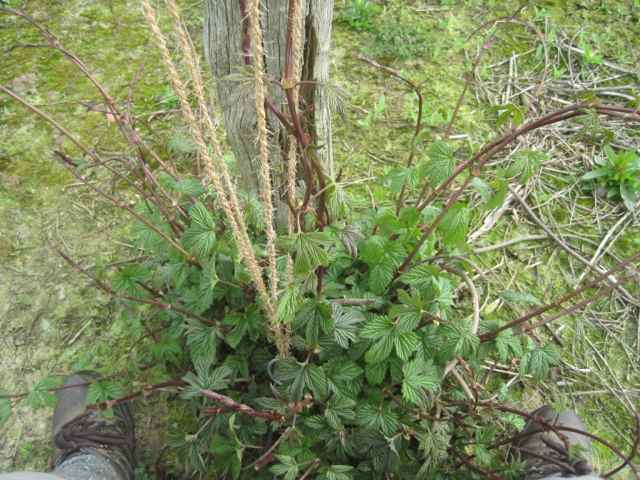
I do a quick check for a long narrow head on each bine, then if you have 2 bines per string you can wind both up each string together. They need to go up the string clockwise, hops follow the sun unlike runner beans which grow in an anti-clockwise direction. If they happen to be put round the wrong way, by next morning they will have unwound themselves. It is good to get them tucked in firmly at the base before you twist them up onto the strings, this is to prevent them being dislodged if you get a windy day before they have really got underway properly. Like the one pictured the plants next to hop poles tend to become stronger plants, possibly they never get run over by a tractor at harvest or it could be they are just more protected.
If the weather is cold and breezy then some varieties will snap easily, if this happens you need to take that bine out and replace it with another which has a head. Warm temperatures are simply kinder for both people and hops.
That is all there is to it really, you pull out the rest of the unwanted bines, then move on to the next hill.
Rules are simple – choose fine bines, make sure they have heads on , decide how many you need for each hop hill and stick to that number. Twist them clockwise up the strings then pull out the rest and move on. Below shows there are plenty more to be twiddled yet, they just need to grow a little bit more!

This week I spotted a few Spanish Bells growing fairly close to a bluebell wood. They were probably escapees from nearby cottages but I have dug the bulbs up now and they have been destroyed. We did not want them cross pollinating with the native bluebells.
The winter storms had also dislodged two Barn Owl boxes. Barn Owls are a protected species, so after having the situation checked by the Barn Owl Trust we are now able to fix one back in situ knowing there are no eggs. The other has tree ducks nesting in it so that will be secured later in the summer. Barn owls have been successful around the High Weald in the past, this is probably due to plenty of grassland and some margins close to the boxes which were left rough to encourage short tailed voles. It is wonderful to watch a barn owl flying silently as it hunts at dusk.

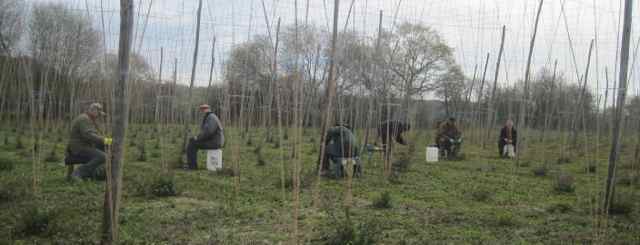

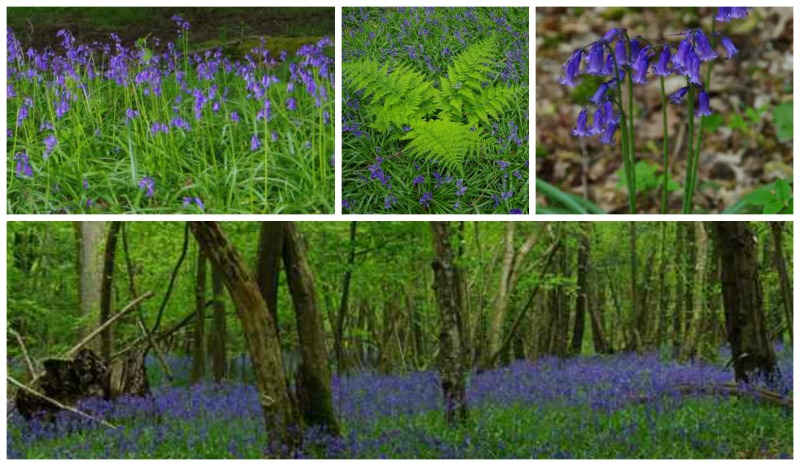
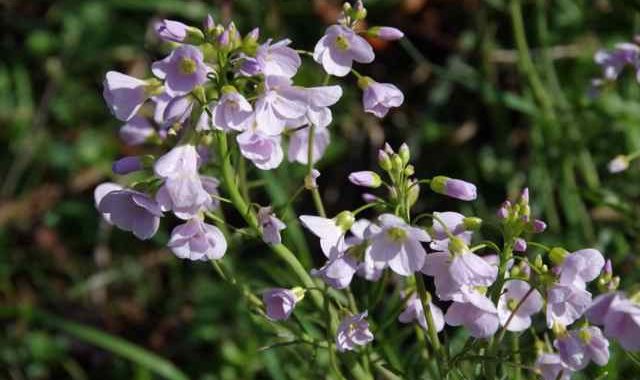
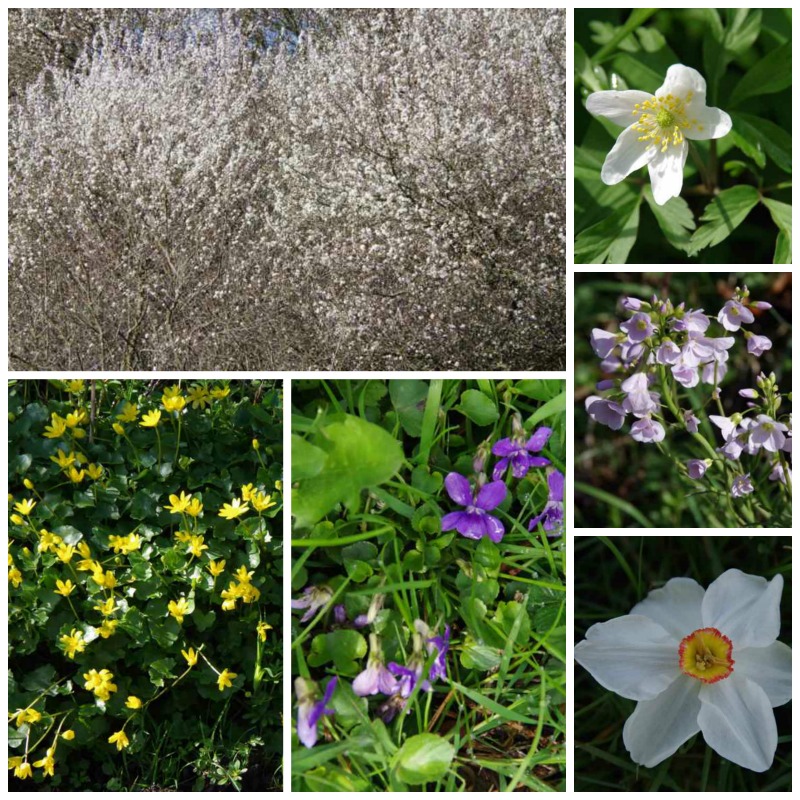
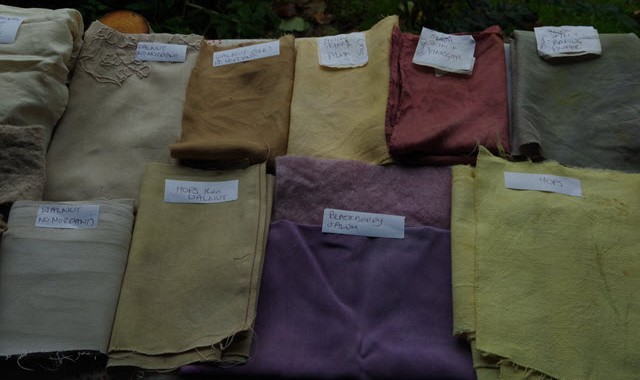

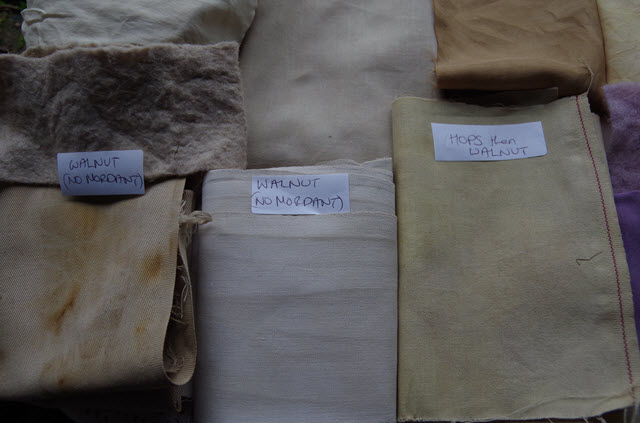
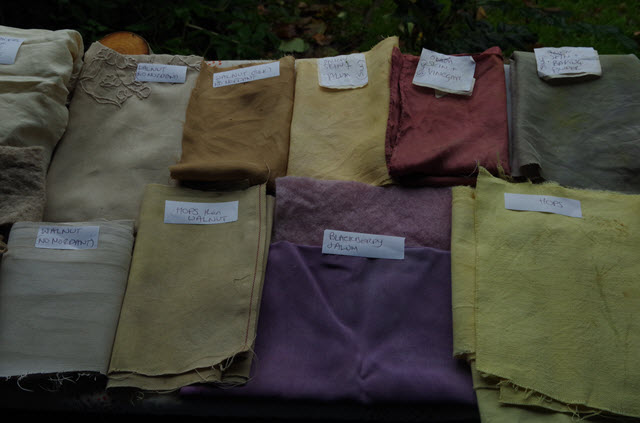
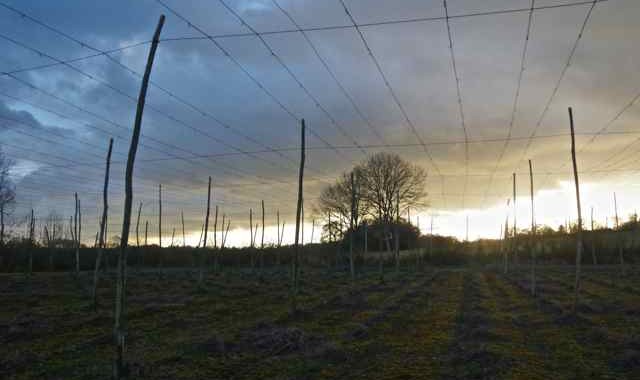

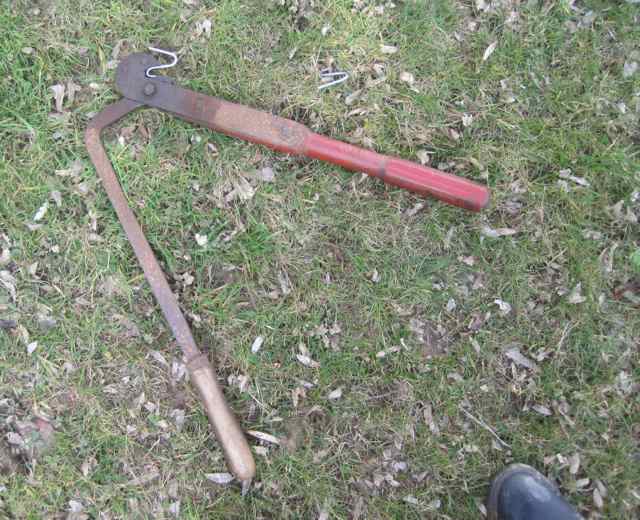
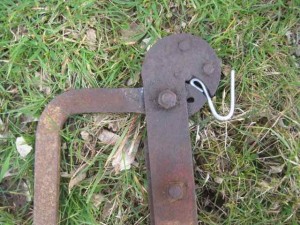 But as with most things there is a balance to achieve. A priority is that I like to get the first young bine, especially from any young hop setts, up onto the strings. This is in case any rabbits come along, they are less likely to nibble these vulnerable and probably tasty shoots once they are going up the strings. Later on rabbits can be a nuisance by occasionally biting the strings through along with the mature hop bine for no apparent reason. Perhaps rabbits need to sharpen their teeth?? Whatever the reason, it is a pain, they just bite the stems and strings but don’t eat them, the result is that hop dies back, such a waste.
But as with most things there is a balance to achieve. A priority is that I like to get the first young bine, especially from any young hop setts, up onto the strings. This is in case any rabbits come along, they are less likely to nibble these vulnerable and probably tasty shoots once they are going up the strings. Later on rabbits can be a nuisance by occasionally biting the strings through along with the mature hop bine for no apparent reason. Perhaps rabbits need to sharpen their teeth?? Whatever the reason, it is a pain, they just bite the stems and strings but don’t eat them, the result is that hop dies back, such a waste.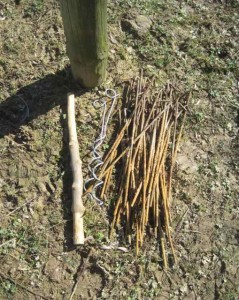 Another outstanding job before stringing and before the ground dries up, was to replace some screw pegs. This type of peg has not been successful. When the hops were up the strings once the wind blew they turned upside down allowing the strings to come off. This is more sensitive in the Sussex Zig Zag system so they needed to be replaced for this year. Luckily only two rows had them and now all have the ‘proper’ spiral screw pegs in situ.
Another outstanding job before stringing and before the ground dries up, was to replace some screw pegs. This type of peg has not been successful. When the hops were up the strings once the wind blew they turned upside down allowing the strings to come off. This is more sensitive in the Sussex Zig Zag system so they needed to be replaced for this year. Luckily only two rows had them and now all have the ‘proper’ spiral screw pegs in situ.


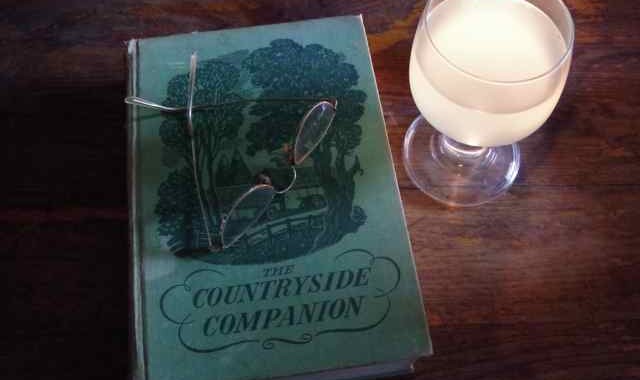
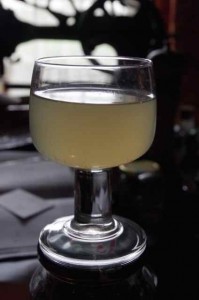 Whilst doing a casual ramble around the web searching for natural dyeing I found
Whilst doing a casual ramble around the web searching for natural dyeing I found 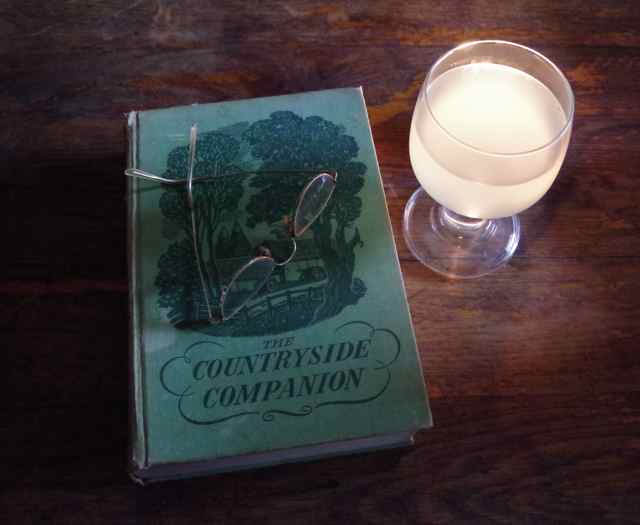
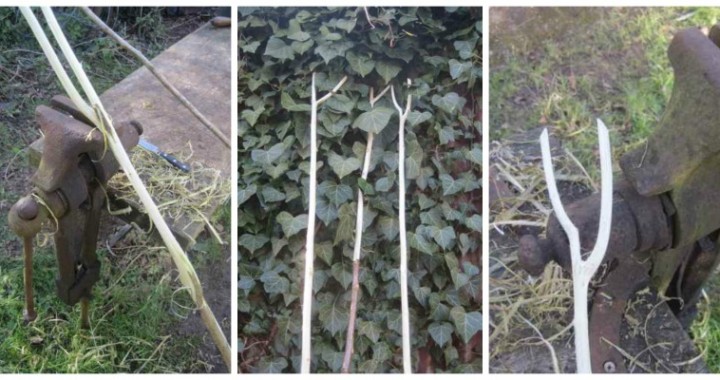

 So first find your perfect hop twiddling stick, then cut it out, trim both ends and debark it if you prefer. It does need to run smoothly in your hands so no untrimmed notches should be left. When I have cut a few I tie them to a length of wood to allow them to dry out and remain nice and straight. I actually like a fork with a kink one side like the one shown, I find this slight bend runs nicely up the strings.
So first find your perfect hop twiddling stick, then cut it out, trim both ends and debark it if you prefer. It does need to run smoothly in your hands so no untrimmed notches should be left. When I have cut a few I tie them to a length of wood to allow them to dry out and remain nice and straight. I actually like a fork with a kink one side like the one shown, I find this slight bend runs nicely up the strings. Like any personal hand tool you just get used to your own hop twiddling stick, It is just easier to use your own, but it is not something you can share easily either. You would always be waiting for the other person to finish using it. Whilst most people would not dream of sharing their special stick, if you are lucky they might offer to do your hop instead!
Like any personal hand tool you just get used to your own hop twiddling stick, It is just easier to use your own, but it is not something you can share easily either. You would always be waiting for the other person to finish using it. Whilst most people would not dream of sharing their special stick, if you are lucky they might offer to do your hop instead!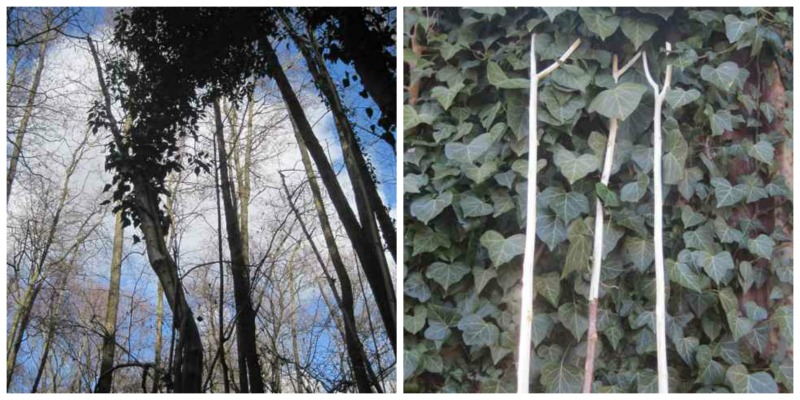
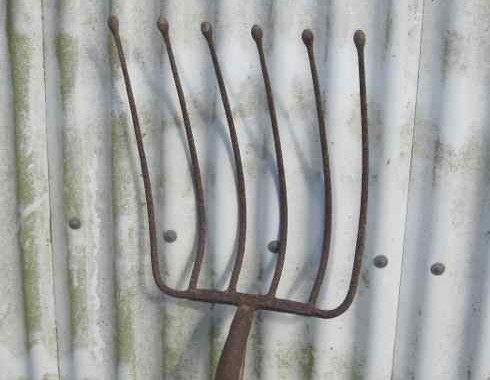

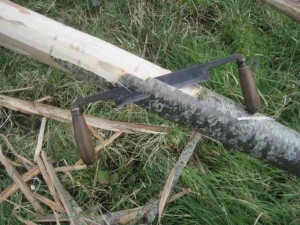 rewarding. So with the sun shining I completed debarking some chestnut poles for the new section of the hop garden. Normally the hop garden would go up before the hop setts were planted but this time, it is of necessity back to front. Then the ground was far too wet this winter to get on it with a tractor to auger in the hop poles prior to planting. So the hop setts went in and as soon as the ground is dry enough these poles can be put in to make the extension. Wirework and hooking for the stringing can then be added to the poles, as I said a very back to front. The
rewarding. So with the sun shining I completed debarking some chestnut poles for the new section of the hop garden. Normally the hop garden would go up before the hop setts were planted but this time, it is of necessity back to front. Then the ground was far too wet this winter to get on it with a tractor to auger in the hop poles prior to planting. So the hop setts went in and as soon as the ground is dry enough these poles can be put in to make the extension. Wirework and hooking for the stringing can then be added to the poles, as I said a very back to front. The 